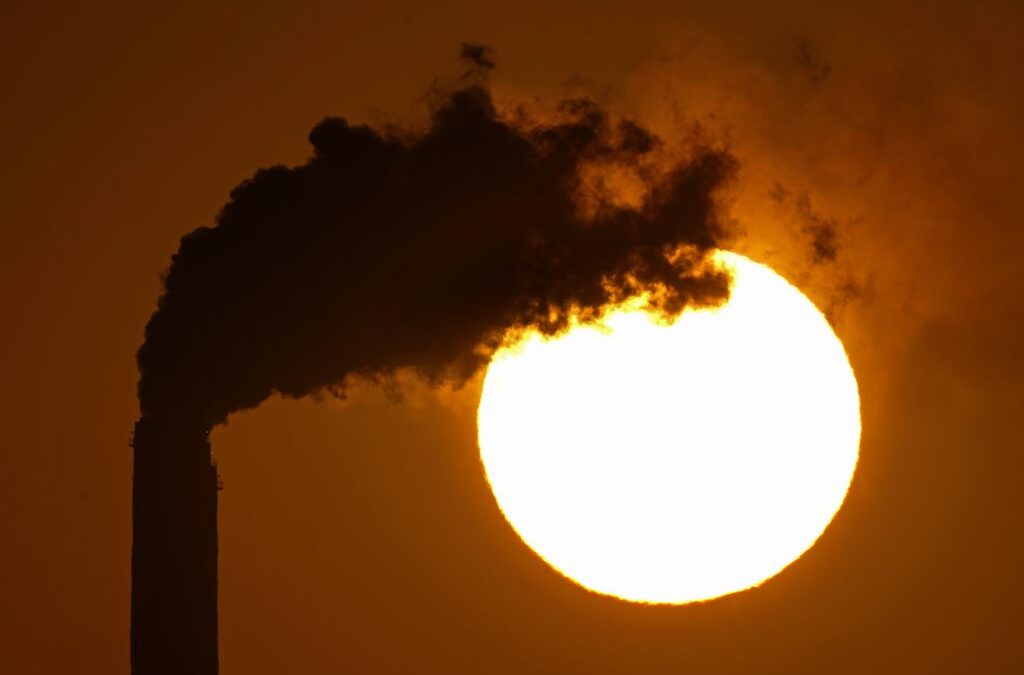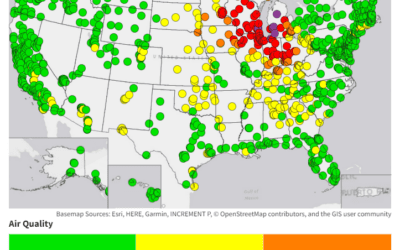
#image_title
There’s a distinct possibility last winter’s severe storms and flooding could repeat this year.
Wisconsin’s coastal communities on Lake Michigan could be in for another rough winter of storms, flooding, and erosion as water levels are expected by the US Army Corps of Engineers to remain above or near record highs for the foreseeable future—and they haven’t even recovered from severe storms earlier this year.
Cities like Milwaukee, Racine, and Kenosha were hit with millions of dollars’ worth of damage in a massive Jan. 11 storm this year, but it is anything but guaranteed there will be a reprieve as temperatures drop. And with limited resources to permanently stave off the effects of climate change, odds are these coastal communities could continuously see dire ramifications as the years progress.
“Right now, it’s a ‘we’re crossing our fingers’ type of deal,” said Matthew Collins, director of Kenosha County’s Parks and Recreation department.
Ideally, the finger-crossing will be all the luck cities along Lake Michigan need. But communities still reeling from the Federal Emergency Management Agency-classified emergency of January should brace for more devastation, said Deanna Apps, a physical scientist with the US Army Corps of Engineers Detroit district.
While Lake Michigan’s record highs are done for now, the water is still expected to remain within a few inches of the record levels, according to Army Corps of Engineers projections. The projections say that the lake will remain 30 to 33 inches higher than average levels for the next six months, Apps said.
That high water, coupled with higher water temperatures due to a hot summer, will likely lead to increased levels of lake evaporation, Apps said. And with increased evaporation comes the potential for more storms.
“This is a time of year when we typically see some more active storms in the region,” Apps said. “High wave action is still a concern, lakeshore flooding and erosion will still be a concern this year as it was last year. Even though we’re in that period of seasonal [water] decline, still be cautious; we’re still at very high water levels in that region.”
The Kemper Center, a historic Kenosha County park and cultural center on the City of Kenosha lakefront, fell victim to severe erosion on Jan. 11 when massive waves shot past the coast’s undersized revetment and swallowed up to 20 feet of lake frontage. The flood scattered debris throughout the area while carrying away portions of a multi-use recreational trail on the lakefront.
It took until just last month for debris removal to be “substantially completed,” according to Collins. The cleanup may have finished just in time for more rubble to be strewn across the Kemper Center shore; it was too costly—$15 million—for a permanent fix for the erosion.
“It’s only a matter of time before we see continued erosion along our part, not having the proper armor,” Collins said.
About 30 miles up the coast, the Port of Milwaukee—a major economic engine not just for Milwaukee, but for the whole state’s shipping industry—sustained millions of dollars in damage in the Jan. 11 storms. Like the Kemper Center, damage remains and some areas are still boarded up, said Adam Tindall-Schlicht, the port director.
“We still have millions of dollars of repairs that have been delayed,” Tindall-Schlicht said. “The reality is, most port authorities operate on a budget to sustain operations. Preventative maintenance backlog and lack of infrastructure investment has really become a problematic paradigm.”
The alarming reality for coastal cities is that this cycle—of damaging storms followed by a frantic sprint to repair before the next big damaging event hits—could become more and more frequent. Charlie Shabica, professor emeritus at Northeastern Illinois University’s Department of Earth Science, told UpNorthNews in January that while Lake Michigan’s average water level has remained fairly steady for the past 1,000 years, the cycle between record highs and record lows has greatly sped up due to climate change.
The lake was last at a record low level in 2012-13, meaning it took just seven years for the water level to swing back to a record high. The interval between the previous record high and low was three times that length, from 1965-86.

From the top: What is this Inflation Reduction Act that’s so important to the presidential election?
It’s part of President Biden’s legislative agenda—the most productive in generations, yet few Americans know all the details of how it improves...

Here’s how to lower your home’s energy bill under the Inflation Reduction Act
It begins with assessing your home’s current energy use, planning improvements, then getting connected to the credits and rebates that can create...

Biden’s EPA announces rules to slash coal pollution, speed up clean energy projects
The Biden administration last month announced a set of four final rules designed to reduce harmful pollution from power plants fired by fossil...

How to apply for a job in the American Climate Corps
The Biden administration announced its plans to expand its New Deal-style American Climate Corps (ACC) green jobs training program last week. ...




